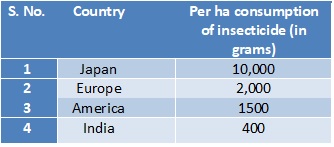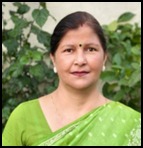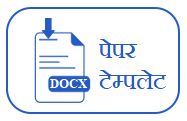Harmful Effects of Chemical Pesticides

DOI:
https://doi.org/10.54060/jase.v3i2.31Keywords:
Pesticide Pollution, Modern Agriculture, Plant Diseases, Crop GrowthAbstract
After the rise of Green Revolution in Indian agriculture, pesticides have played an im-portant role in increasing crop production and protecting crops from pests, diseases and weeds. India is the third largest consumer (BWD) of pesticides in the world and the largest consumer among countries in South Asia. India is the second largest producer of common insecticides (thempb chmejpbpakme) in Asia after China and ranks 12th in the world. India is the 13th largest exporter of pesticides in the world after Brazil, US. A. Exports pesticides to countries like France and Netherlands. Over the decades, the con-sumption of pesticides in India has increased manifold from 154 MT in 1953-54 to 85000 MT in 2009-2010. Pesticide consumption per hectare in India is among the low-est in the world, at 0.6 kg per hectare recently. Other countries of the world like- U.K. Of. (5.7 kg. per hectare), France (5-6 kg. per hectare), Korea (7 kg. per hectare), U.S.A. (7 kg. per hectare), Japan (12 kg. per hectare), China (13 kg. per hectare) and Taiwan (17 kg. per hectare) are consumed. The highest consumption of pesticides in our country is An-dhra Pradesh, Maharashtra and Punjab, in which 45 percent of the total consumption is used. Most of the pesticides are used in crops like cotton, paddy, fruits and vegeta-bles. According to the Insecticides Act 1968, there are about 155 insecticides registered in India, including 57 insecticides, 44 fungicides, 33 weedicides, 7 rodenticides, 4 plant growth regulators, 4 fumigants, 3 octapadicides, 1 molluscicide, 1 nematode, 1 soil ster-ilizer. Of the total pesticides in our country, 60 percent insecticides, 18 percent fungi-cides, 16 percent weedicides, 3 percent biocides and 3 percent other chemicals are used in agriculture.
Downloads
References
P. I. Devi, J. Thomas and R. K. Raju, “Pesticide consumption in India: A spatiotemporal analysis,” Agricultural Economics Re-search Review, vol.30, no.1, pp.163-172, 2017.
G. Forget, “Balancing the need for pesticides with the risk to human health: Impact of pesticide use on health in developing countries,” Proceedings of symposium held in Ottawa, pp.2-16, Sep 1993.
J. Jeyaratnam, “Acute pesticide poisoning: a major global health problem,” World Health Stat Q, vol.4, no.3, pp.139–144, 1990.
B. D. Kansal, “Effect of domestic and industrial effluents on agricultural productivity in: G.S Dhaliwal, B.S. Hansra and N. Jerath (eds) Management of Agricultural Pollution in India,” Commonwealth Pubishers New Delhi, pp.157-176, 1994.
R. C. Sharma, N. Bhaskaran and N. K. Bhide, “A simplified chemical method of DDT estimation in the body fat,” Ind. J. Exp. Biol., vol.17, pp.1367-1370, 1979.
P. P. Singh and R. P. Chawla,” Insecticide residues in total diet samples in Punjab India,” Sci. Total Environ.,” vol.76, pp.139–146, 1988.

Downloads
Published
How to Cite
CITATION COUNT
Issue
Section
License
Copyright (c) 2023 Govind Prakash Acharya

This work is licensed under a Creative Commons Attribution 4.0 International License.



























